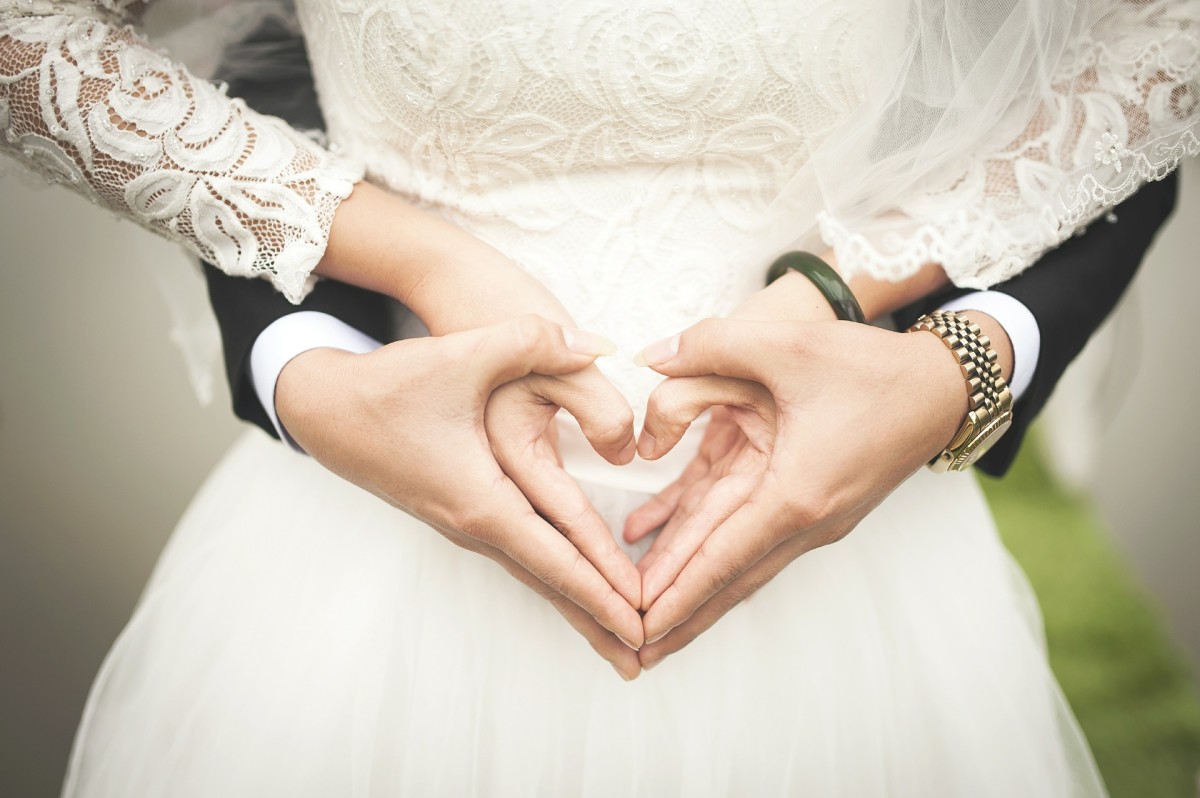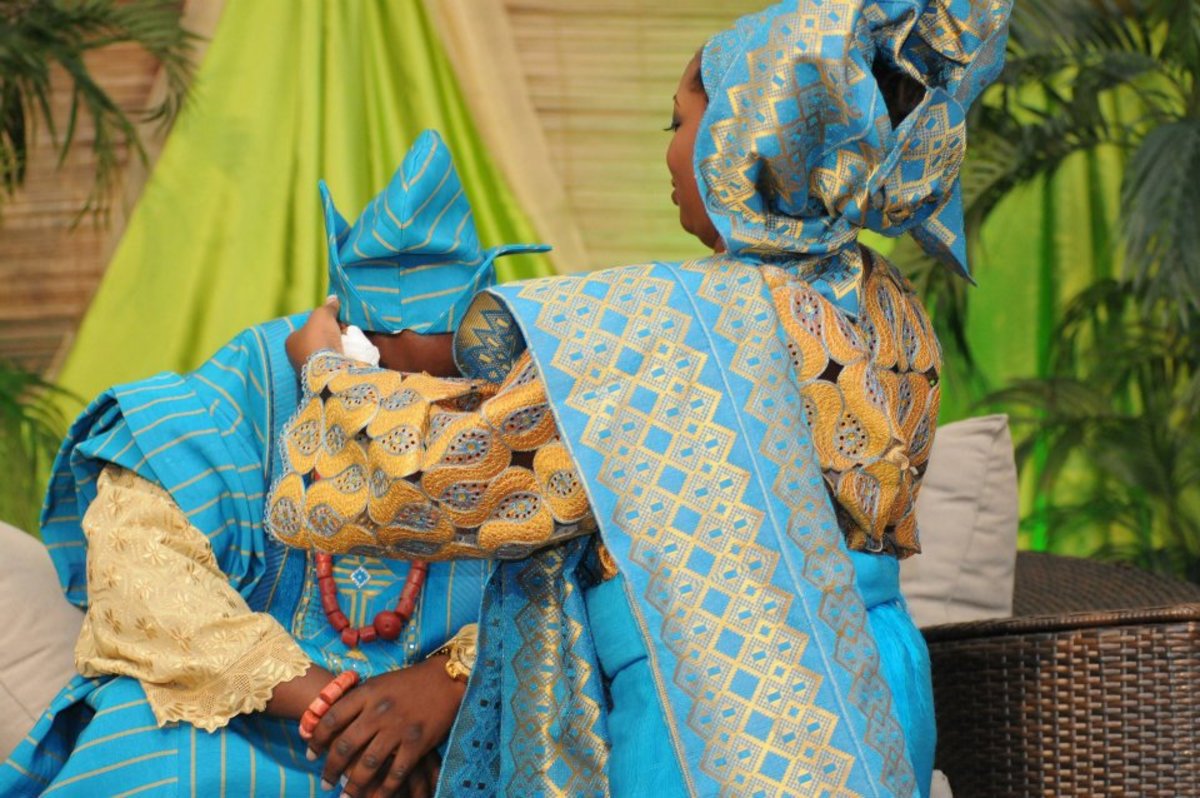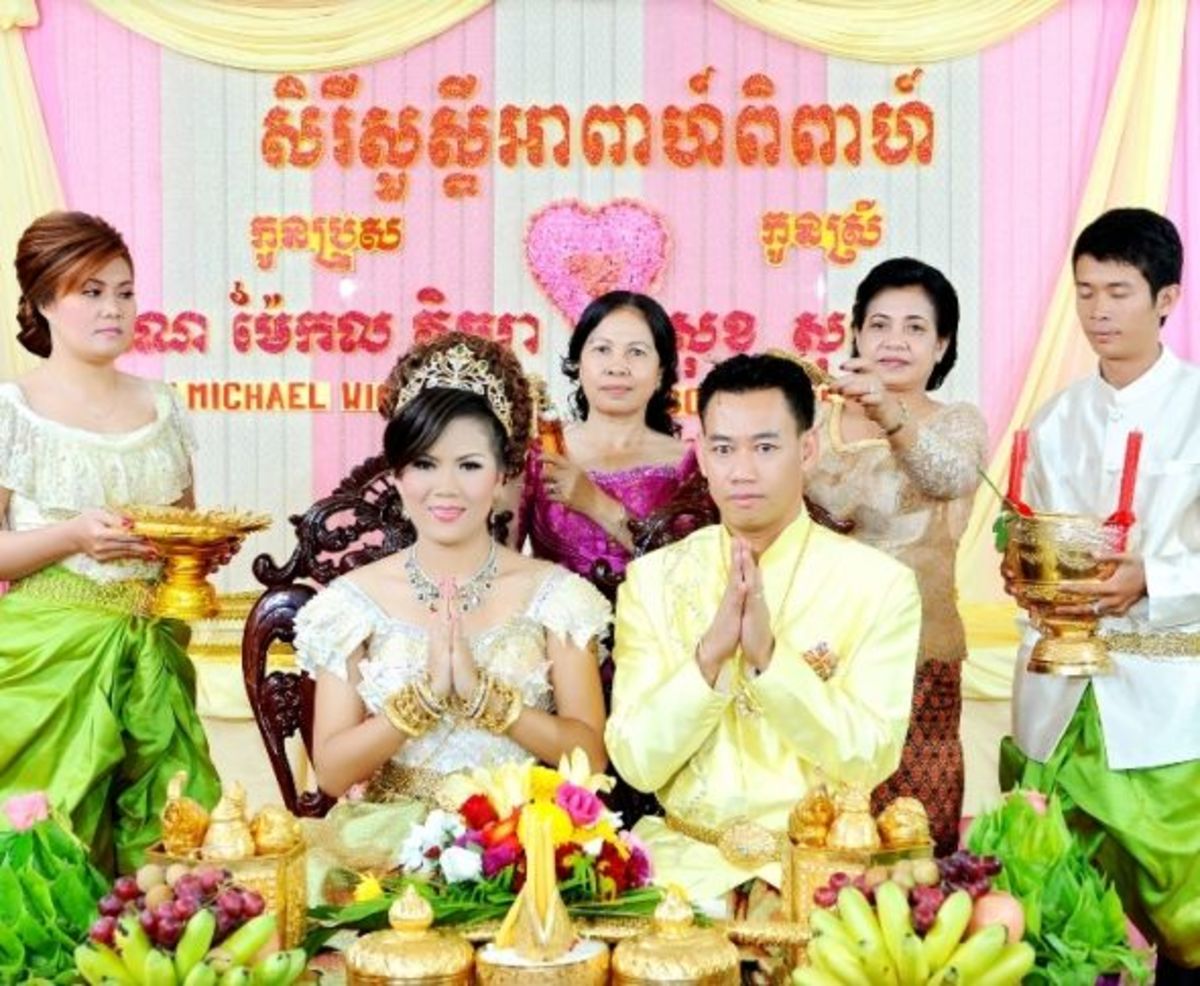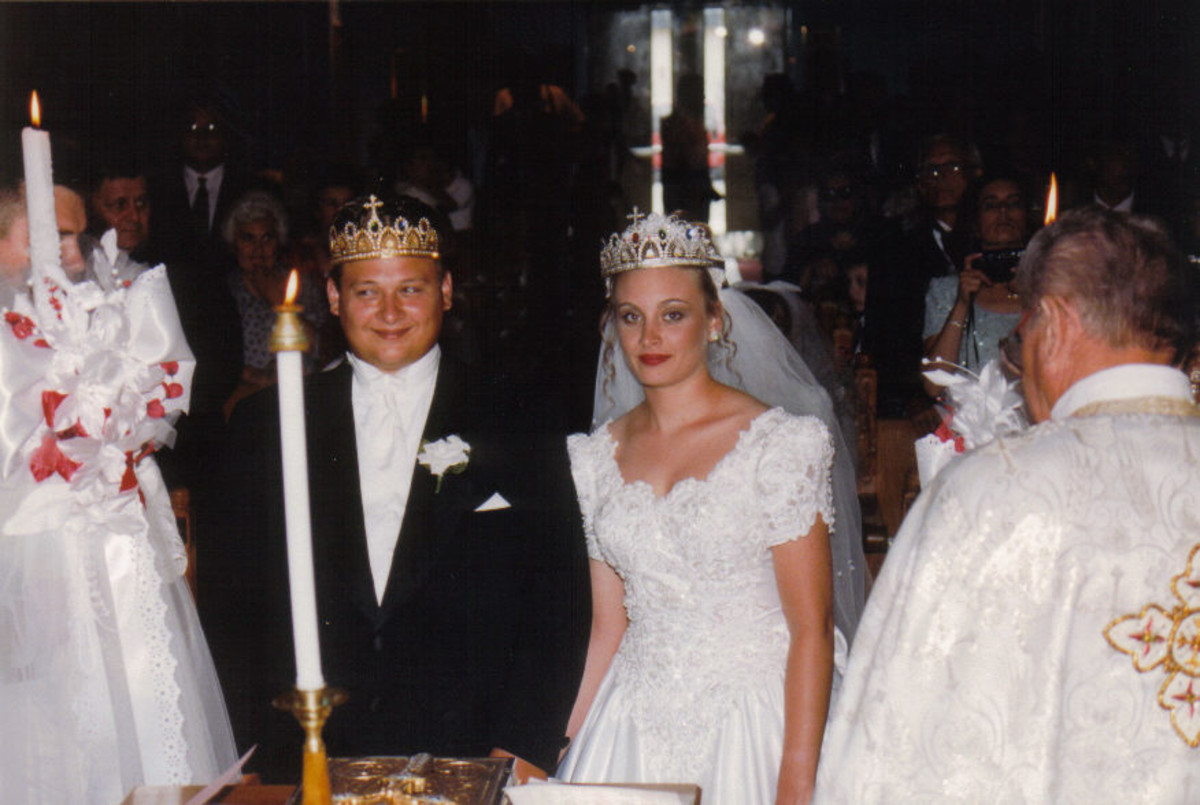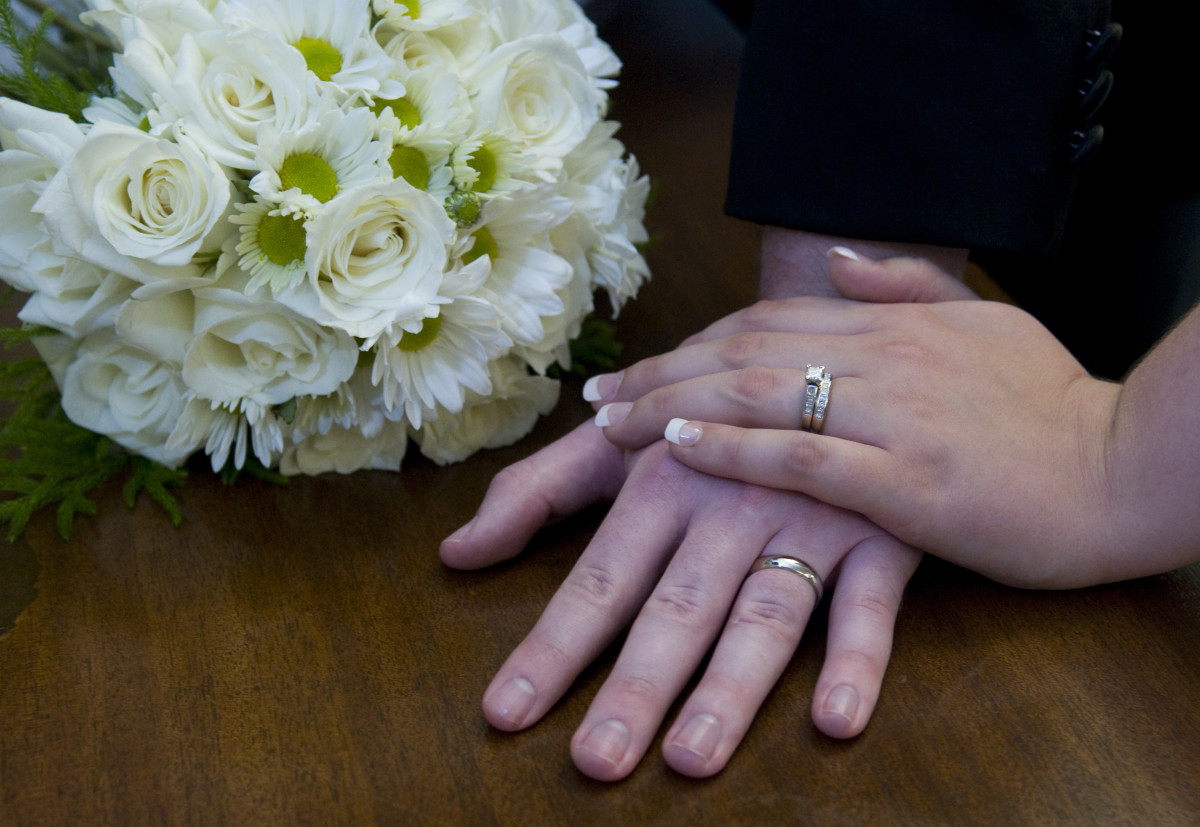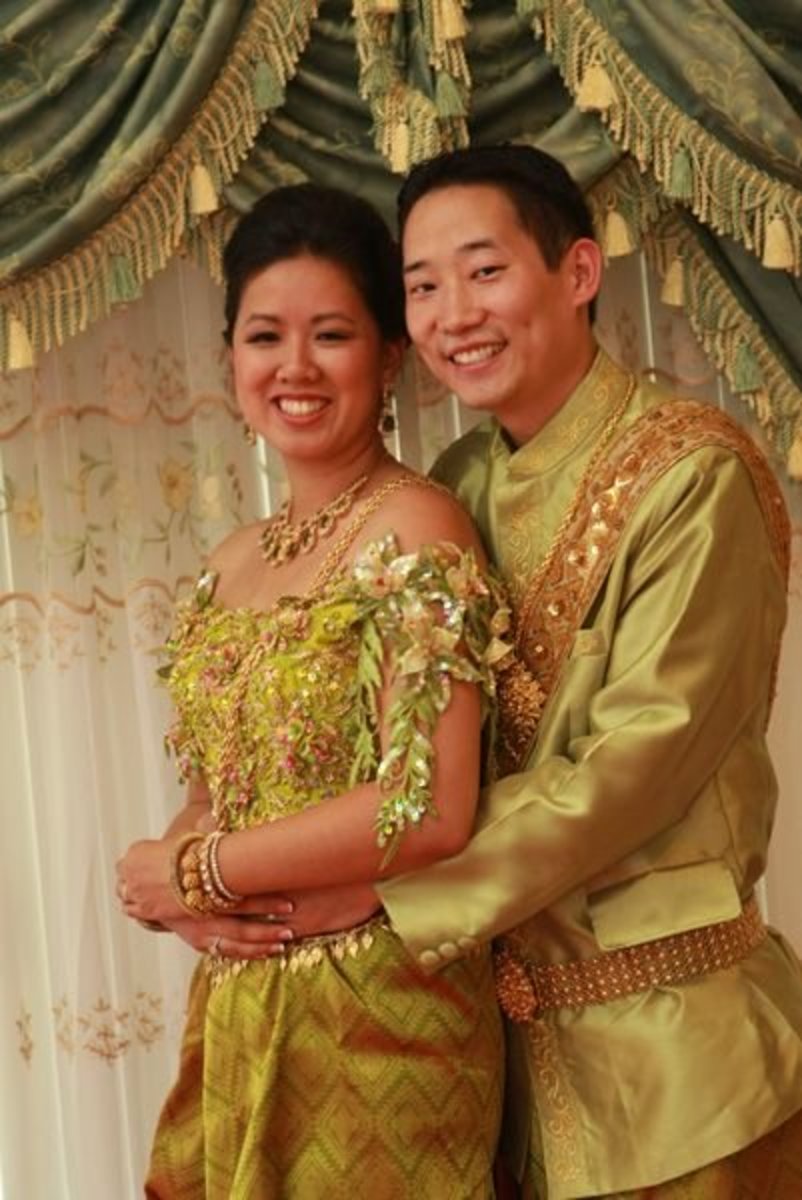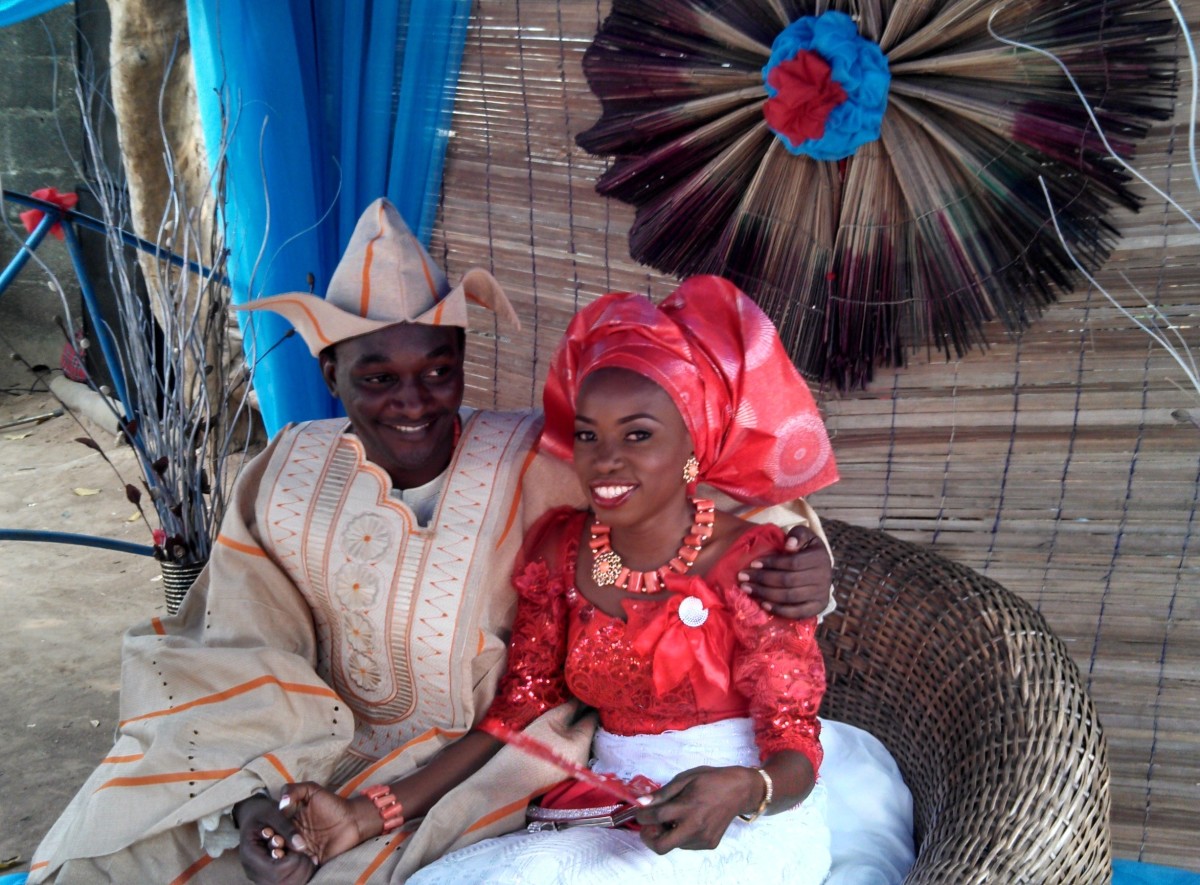Chinese Bridal Customs
Chinese Weddings
Chinese weddings are rich with symbolism, tradition, and rituals. Paying homage to ancestors and traditions is one of the key concepts in Chinese weddings. Whether you are a Chinese-American bride or groom, or simply a sinophile who admires Chinese culture and customs, including some of these customs in your wedding will make it more meaningful and memorable.
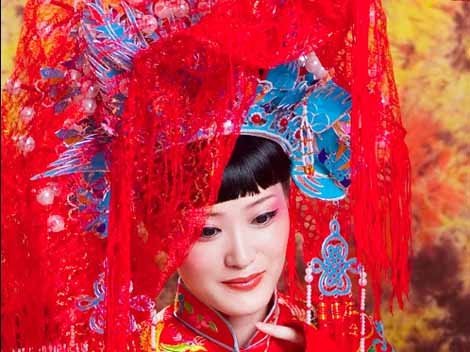
A Blending of Cultures
Most Chinese-American brides and grooms will plan weddings that are a blend of Eastern and Western traditions. The wedding day may well find the bride dressed in the customary red cheongsam serving tea to her husband's family at one moment, and dancing the night away to a contemporary d.j. in a white wedding gown at a later time. The symbolism and rituals of Chinese weddings are actually quite easy to meld with American customs, and most brides and grooms are able to seamlessly blend the two cultures into one cohesive wedding.
Let The Planning Begin
Once the engagement is announced, it is time to start planning the wedding. Setting a wedding date is much more than a matter of seeing what days the reception hall or church still has open. Numerology and the Chinese zodiac play an important role in determining which wedding date will be most auspicious for the bride and groom. It also helps them to avoid any dates which would be unlucky ones for the start of their marriage. The engaged couple meets with a fortune teller or feng shui consultant who will take into account the birth dates of the bride and groom, the Chinese calendar, and the Chinese zodiac. It is considered unlucky for the bride or groom to try to make the determination of the best wedding date without using a consultant.
Rice Cakes And Chopsticks
Every single aspect of a Chinese wedding has symbolic meaning, starting when the couple becomes engaged. Each family has special obligations to fulfill at the time their son and daughter are betrothed. The groom's family will give bridal cakes, small sweet rice cakes, to the bride's family. The bridal cakes are then distributed to family and friends by the parents of the bride to spread the joyous news of the upcoming marriage. The parents of the bride, in turn, present the groom's mother and father with a set of chopsticks. The word chopsticks sounds very similar to the phrase "fast boy" in Chinese, and the chopsticks are a wish that the newlyweds will have their first son very quickly.
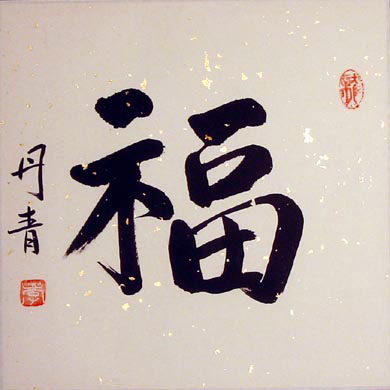
It's Your Lucky Day
Certain numbers are considered to be generally lucky, while other dates are universally unlucky for weddings. The Chinese believe that even numbers are more auspicious than odd ones, including the month and the day of the month. Chinese wedding ceremonies are usually scheduled to begin on the half hour, because it is believed that time is on the upswing then. The one time that all couples should avoid planning their wedding is the middle to the end of the seventh lunar month on the Chinese calendar. This is when the annual Ghost Festival is held, and ancient tradition holds that at this time lost spirits wander the earth. As the Chinese make a strong distinction between what is associated with weddings, celebrations, and life versus funerals and death, the Ghost Festival would be one of the least favorable times of the year for a wedding.
- Numbers in Chinese culture
In Chinese culture, certain numbers are believed by some to be auspicious or inauspicious based on the Chinese word that the number name sounds similar to
- Chinese Ghost Festival
The Ghost Festival is a traditional Chinese festival and holiday, which is celebrated by Chinese in many countries. In the Chinese calendar the Ghost Festival is on the 14th night of the seventh lunar month.
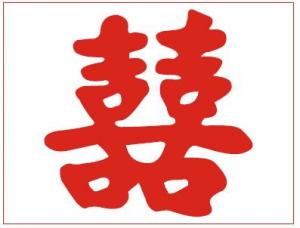
Double Happiness
Symbols are very important parts of Chinese society in general, and weddings in particular. There are many motifs that are very positive and will often make an appearance in a Chinese wedding. The foremost of these is the double happiness symbol. It can be used to enhance almost any part of a Chinese-American wedding, from the wedding invitations, to the decorations, to the wedding cake, and even the favors. The dragon and the phoenix are a very significant pair of symbols, with the dragon representing the groom and the phoenix the bride. These motifs will frequently be embroidered on the wedding attire of the bridal couple. A pair of cranes is another favorable omen, as it represents longevity.
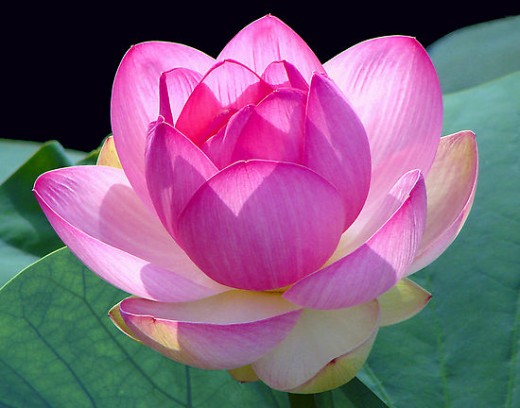
Wedding Flowers
In addition to animals and the double happiness symbol, there are particular flowers which the Chinese favor for wedding celebrations due to their positive meanings. The orchid is a symbol of love and fertility, while the peony stands for spring and renewed life. Oranges are a sign of good luck, while their fragrant white blossoms symbolize fertility, just as they do in Western cultures. The lotus blossom is one of the most favorable flowers in many cultural traditions, and for a wedding it symbolizes creation, an unbreakable relationship, and purity. Any of these flowers would be ideal to use for the bouquets, ceremony arrangements, and centerpieces in a Chinese-American wedding. They can also be paired with "lucky" bamboo, the Chinese symbol of long life, and a very popular wedding favor.
Wedding Colors
Colors also conjure up positive associations. In China, red is the color of happiness, and is often the primary color theme for weddings, especially for the bride's attire. Gold is another favored color, as it is a sign of wealth. White, on the other hand, is actually associated with death and funerals, and is not traditionally considered to be at all lucky for a wedding as a consequence. Despite that, the Western idea of a "white wedding" has become so globally influential that many Chinese brides, whether in the United States or China, will wear a white bridal gown for at least part of the wedding.
Wedding Programs
At an American wedding that mixes guests from Chinese and non-Chinese backrounds, much of this important symbolism will be lost on the Western half of the guest list. That is why many brides and grooms will use their wedding programs as an opportunity to share with their guests the meaning behind their choices. Everything from the selection of an auspicious wedding date to the special symbols used to the history of the tea ceremony can be covered in the program. The bride and groom may also choose to include a few verses of Buddhist poetry in their programs, in addition to any other blessings or passages that are meaningful to them as a couple.
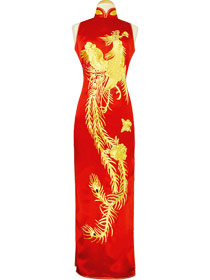
Cheongsam
One of the best known aspects of a Chinese wedding is the red cheongsam or qipao traditionally worn by the bride. The cheongsam is a long fitted dress made of rich silk, which often features embroidered symbols. The phoenix is one of the most auspicious motifs for a bridal cheongsam; another top choices is peonies. Many brides will select cheongsams that are created from lucky red silk with gold embroidery. The traditional accompaniment to the cheongsam or qipao is a crown or tiara created from gilded silver and decorated with feathers and pearls (in honor of the phoenix). In lieu of a tulle veil, a red silk cloth is attached to the headpiece. Due to the large size and considerable weight of the crown, brides these days will usually only wear it long enough for a few photos. It seems like most Chinese-American brides will wear a combination of the traditional cheongsam with crown for one portion of the wedding, and the classic white American wedding gown with pearl or crystal wedding jewelry for another part of their special day.
- Bridal Jewelry and Bridesmaids Gifts
Bridal Jewelry and Bridesmaid Jewelry for Your Wedding Party in Pearl, Crystal, Silver and Gold.
The Good Luck Woman
In addition to her traditional garb, a Chinese-American bride can participate in a hairdressing ritual either the night before her wedding or early in the morning of the wedding. She first washes in a grapefruit infused water, as a form of ritualistic cleansing of evil influences. Then the bride is attended to by a "good luck woman". The "good luck woman" is one who has obtained all of the blessings and good fortune in life that a young bride could wish for: a happy marriage, many children, and wealth. The bride's hair is brushed four times while the good luck woman bestows her with wishes for a happy future. The first brushing of the hair stands for beginning to end, the second is for harmony from youth to old age, the third is a wish for many grandchildren, and the fourth is a wish for a long marriage and wealth. Finally, the good luck woman forms the bride's hair into a traditional bun. This part of the ritual is not faithfully observed by every Chinese-American bride today, as many prefer to have their hair styled in a contemporary fashion.
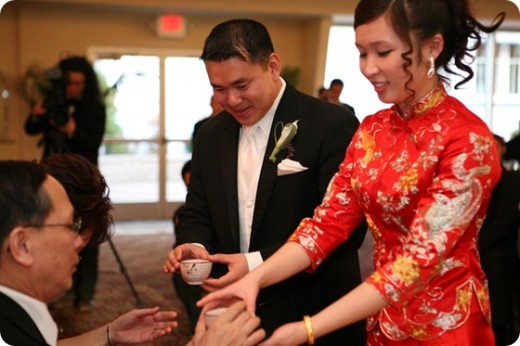
The Tea Ceremony
No Chinese wedding would be complete without the tea ceremony. This ritual is an ancient custom intended to demonstrate respect and honor for family. The original way in which the tea ceremony was conducted was for the bride to privately serve her own family before the wedding ceremony, and for the newlyweds to serve the groom's family together following the marriage vows. Many Chinese-American couples adapt this custom and have one tea ceremony with both families present. It usually comes right after the end of the marriage ceremony, but some couples will wait until later in the day or even the following morning. The tea ceremony can either be held in private (perhaps while the rest of the guests are at the cocktail hour before dinner), or with all of the guests present (to watch, not take tea).
The tea ceremony may be held anywhere, such as in a home, a garden, or in a room at the reception venue. The spot will be decorated with the same auspicious colors, flowers, and symbols as the rest of the wedding. An altar should be created to feature photos of the newlyweds' ancestors, and will be adorned with white flowers, incense, and fruit. Candles are also a part of the tea ceremony; one will be painted with the image of the dragon, and the other with the phoenix to represent the groom and bride's families. If they so desire, the newlyweds can also light a candle together, in a very similar ritual to the unity candle lighting that is commonplace in American wedding ceremonies.
The tea is served by the bride and groom from a beautiful tea set on a tray. Honoring family and respecting elders is one of the cornerstones of Chinese culture, and this is evident in the matrimonial tea ceremony. The newlyweds first serve the groom's parents. Next are his paternal grandparents, followed by the maternal grandparents. After that, the rest of the groom's relatives are offered tea, beginning with his eldest uncles and aunts, working down the family line to the oldest brother of the groom (if he has one). The entire ceremony is then repeated for the bride's side of the family, if the couple has decided to hold a ritual for both sides at once.
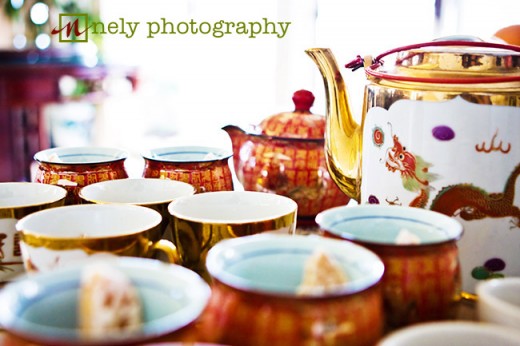
As each guest is presented with a cup of tea, he takes a sip and then places a red envelope on the tray. Known as "lucky red envelopes" or lai see, they contain cash or jewelry gifts for the bride and groom. In Chinese culture, this is the customary wedding present, not household goods. As mentioned before, everything has symbolic meaning in Chinese heritage, and this includes the gift of money in the lai see. Just like with the wedding dates, even numbers are considered to be more lucky than odd ones (which are associated with funerals). A gift of $88 or $168 would be very auspicious, whereas an envelope containing $75 or some other odd number would not be so lucky. There is one even number that should be avoided, which is the number four. In Chinese, four sounds very similar to death, making it very unlucky indeed.
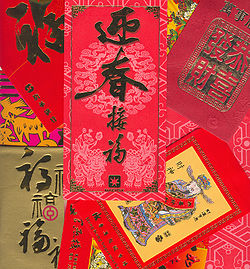
- How to Have a Chinese Tea Ceremony at Your Wedding
Serving tea, China's national drink, is a sign of respect at a Chinese wedding. That's why many couples include this tradition as an important part of their special day.
- Chinese Wedding Tea Ceremony
A Chinese wedding tradition, Tea Ceremony at home
Wedding Food
Food is as important a part of a Chinese wedding as any other. The banquets are usually quite abundant, and the more courses, the better. A nine course dinner represents eternity, so it is especially favored. Like every other aspect, the foods served have symbolic meaning. Peking duck stands for joy and happiness. A whole lobster or fish is a sign of completeness. Shark fin soup conjures up wealth, and sea cucumbers represent harmony for the new marriage. Another traditional food to include in a Chinese wedding banquet is sweet sticky buns shaped like peaches. The sweet flavor is symbolic of wishes for a sweet life for the newlyweds, and the peach stands for fertility. The trio of primary themes which are vital in all aspects of Chinese weddings are happiness/luck, fertility, and wealth (along with respect for heritage, which is shown by adhering to all of these customs).
During the reception, the bride and groom will visit each table of guests between dinner courses. It is customary for the newlyweds to be joined by their immediate family while making the rounds. At each table, the bride and groom offer a toast to their guests. Holding their glass with one hand on the top and one on the bottom, the newlyweds will say, "Kanpei", which means "dry glass". The guests in return will pay their respects to the newlyweds.
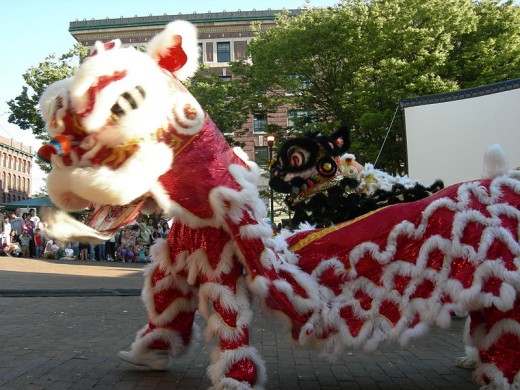
Symbolism & Tradition
There are many other Chinese wedding customs worth including in an East-meets-West ceremony or reception. Traditional mandolin music can be played during the ceremony or cocktail hour. If you are really looking to treat your guests to something special, include the Lion Dance in your event. Dating back 1000 years, the Lion Dance is a marvelous spectacle featuring performers dressed in fanciful lion costumes. The lions dance and perform to lively music made by drums, gongs, and symbols. The Lion Dance is a pure joy, and can be included at any time of the wedding, other than during the exchange of vows.
The incredible wealth ofsymbolism and traditional ritualsthat are characteristic of a Chinese wedding make them very powerful events. In a desire to honor their heritage and to start off their married life on lucky footing, many modern Chinese-American couples decide to make these ancient customs a part of their contemporary weddings. The charms, symbols, and themes of Chinese weddings are so intriguing that they are also finding their way into many Asian-inspired weddings of non-Chinese brides and grooms, as well. This is a testament to the meaningful nature of the myriad of Chinese wedding customs, signs, and omens.


